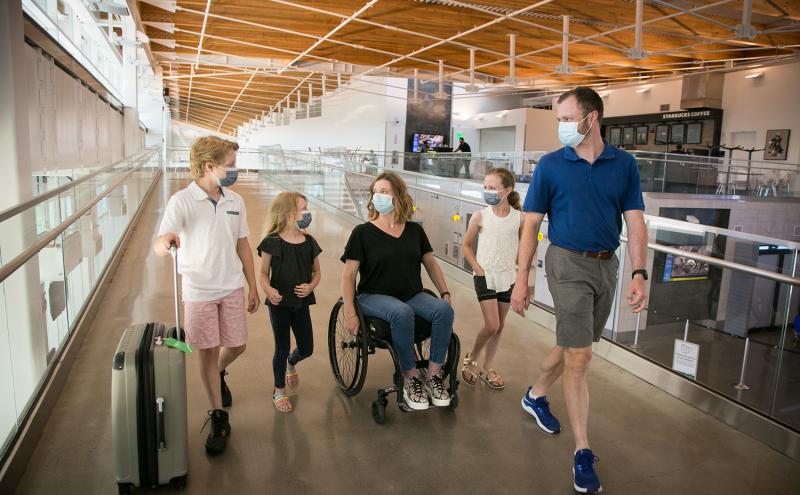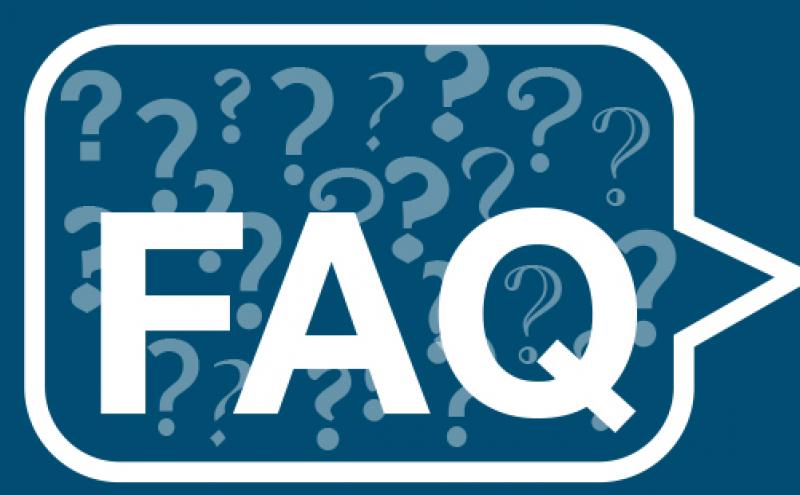
As this week marks the 31st anniversary of the Americans with Disabilities Act (ADA), Seattle-Tacoma International Airport (SEA) continues its facility investments and customer experience programs to ensure travel is more accessible and less stressful. New buildings, new amenities and expanded training this year advances SEA’s work to be the most accessible airport in the U.S.
"We set a goal to be accessible to everyone,” said Port of Seattle Commissioner Stephanie Bowman. “We know that air travel means mobility and sensory challenges for many of our customers. With the partnership of our community and airport partners we are making real progress in establishing our airport as a national leader for accessibility.”
Several years ago the Open Doors Organization, a non-profit organization focused on improving accessible travel and tourism, developed a report for SEA with over 100 recommendations for how to improve the travel experience beyond the Americans with Disabilities Act (ADA) requirements. Today, 74% of those improvements are complete or in progress and ongoing. The remaining 26% are under consideration as future upgrades. Just nine of the Open Doors Organization recommendations were determined to be not applicable. One of the recommendations, to create an Accessibility Advisory Committee, helps shape the airport’s prioritization and approach on the remaining recommendations and emerging opportunities.
“As a member of the SEA’s Accessibility Advisory Committee, the Northwest ADA Center is honored to regularly meet with Port of Seattle employees, disability community members, and airport stakeholders to discuss ways to improve the airport experience for people with disabilities,” said Northwest ADA Center Interim Director Michelle (Mell) Toy. “The work of the Committee is both creative and practical, and shows that SEA has set its goal higher than ADA compliance as it aims to establish an airport that is accessible and inclusive to each and every person. With all of the good work that the committee has done so far, I’m excited to see what’s next!”
Improvements in 2021 center on better facilities and enhanced customer experience.
A Caring Customer Experience
Whether Seattle is your destination or connection, or you are accompanying someone else in their journey, our customer experience team is here to assist.
- This year, the Port of Seattle instituted a required employee training, Excellent Customer Service for People with Disabilities, for all Aviation Division employees. This course covers the basics on disability sensitivity, accessible facilities and services available at SEA, commonly accepted terminology, and includes helpful resources for better customer service at our airport.
- Ask SEA! The newly launched SEA Voice App for Google Assistant and Amazon Alexa allows you to ask your device at home airport-related questions for quick answers such as, “How do I get wheelchair assistance?” or “How do I get a Sunflower lanyard?”
- Try the Airport Customer Care Chat! Text (206) 787-5388 for help Monday through Friday from 8:30 a.m. to 5 p.m. PST.
- The Airport Volunteer Program is back after a pause due to the pandemic! Our community of airport volunteers is part of the frontline team focused on enhancing the customer experience for all, including passengers with disabilities. Apply today to be an invaluable ambassador for the airport and the Pacific Northwest.
- In 2019, SEA was the first airport in the U.S. to offer the sunflower lanyard to passengers with hidden disabilities such as autism, PTSD, or hearing loss. Today, 13 airports in the U.S. with more coming this year have adopted the program. The lanyard communicates that the passengers wearing it, or member in the group, may need extra help or flexibility while traveling. Pick up a sunflower flower from the Info Desk by Checkpoint #3 or ask a Pathfinder in green.
- As passengers return to travel, explore the SEA Social Story developed for travelers with sensory sensitivities such as autism. This manual was designed with external stakeholders from the Arc of King County and Washington Autism Alliance & Advocacy to help travelers with autism navigate the airport in a world of mask-wearing and travel recovery.
"Accessibility is so much more than being able to physically access a space; it includes being able to participate in the airport experience safely, communicate needs, and understand what may be required to navigate the airport,” said Stacia Irons, Wings for Autism Program Manager and The Arc King County Board Member. “As part of the work on the SEA Airport Accessibility Committee, I worked to develop a social story and resource guide for travelers with autism, as a tool to decrease the stress involved with travel during a pandemic. Many families have been unable to travel due to sensory overload, the Sensory Room represents a beacon of hope to travelers who can now travel and spend time with their loved ones."
Bigger, Bolder, and Brighter North Satellite
SEA recently opened the new North Satellite, home of the N Gates, with accessibility upgrades that make travel easier.
- Two state-of-the-art adult changing tables in family restrooms on the concourse level, across from the Marketplace at N.
- SEA’s first integrated pet relief area features restroom-grade ventilation, a sink area, and supplies for cleaning and proper disposal. It’s located on the train level.
- A nursing suite for traveling mothers features three privacy rooms, a private restroom, sinks, changing tables, seating, and other amenities to ease the stress of traveling for families. It can be accessed on the upper mezzanine level.
Additionally, in spring of this year the airport unveiled a Sensory Room, designed to reduce the stress of travel for those with neurological or developmental disabilities. Located on the train level of the A Gates STS Station, the Sensory Room is a quiet area for travelers with disabilities such as sensory processing disorders, autism spectrum disorders, and other conditions like anxiety and PTSD. This space is a calming environment for those who may feel overwhelmed and overstimulated or need respite from the multitude of sights and sounds of the airport. And we want to know what you think! We recently launched a customer feedback survey, which is also available via QR code in the Sensory Room or on the Sensory Room webpage.
Download (or update!) the flySEA App with our interactive map to locate these inside the airport terminal, which offers wayfinding with the most accessible route.
What’s Next
Accessibility improvements, beyond ADA requirements, are now built into the facility planning and customer experience program for SEA. As the airport modernizes facilities over the coming years from everyday upgrades like signage, lighting and furniture to helpful investments in restrooms, customer information hubs or bag claim infrastructure, SEA is designing advancements to better serve diverse travelers.
Learn more about accessibility at SEA. Additionally, TSA Cares is a helpline that provides travelers with disabilities, medical conditions, and other special circumstances additional assistance during the security screening process. Call 72 hours prior to traveling with questions about screening policies, procedures, and what to expect at the security checkpoint. You can call TSA cares at (855) 787-2227.
Contact
Perry Cooper | Media Officer
(206) 787-4923 | [email protected]



